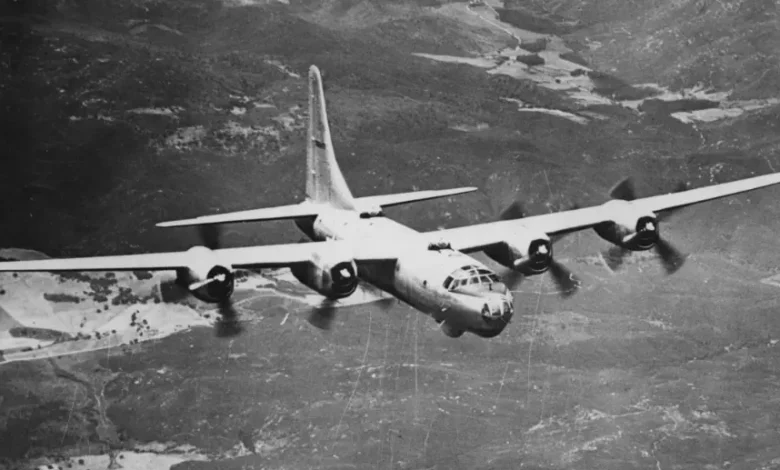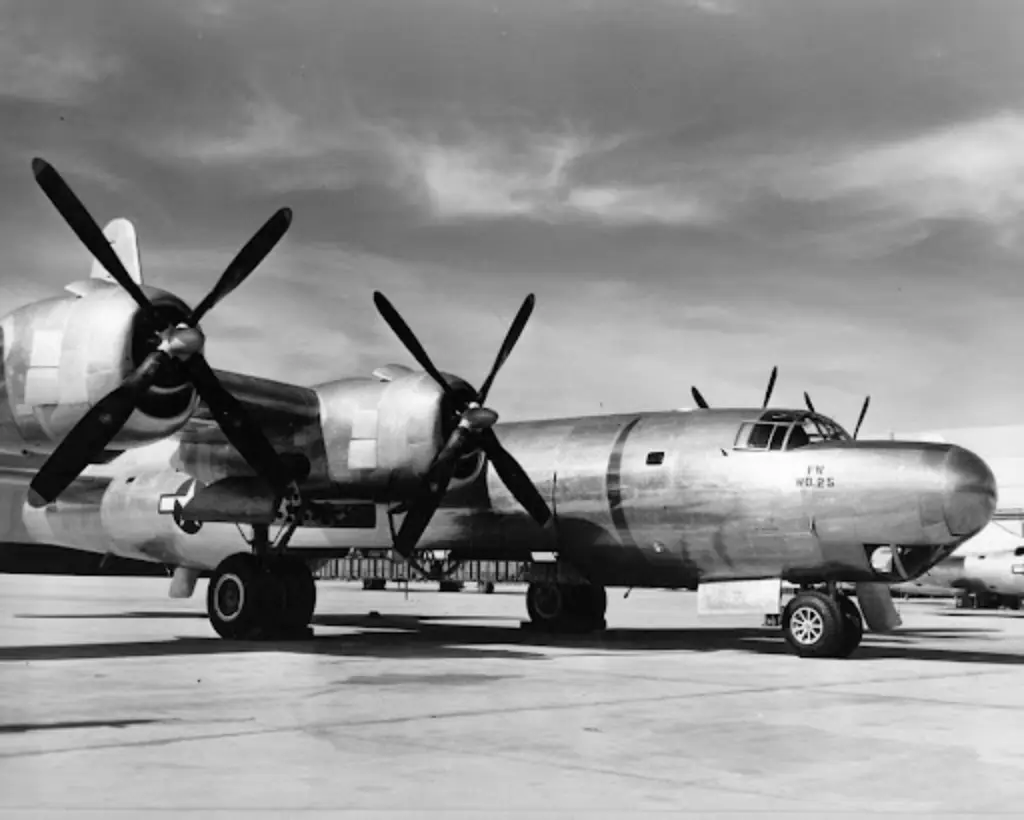Consolidated B-32 Dominator

The Consolidated B-32 Dominator was an American heavy bomber developed as a backup to the B-29 Superfortress during World War II. Entering service late in the war, the B-32 saw limited combat in the Pacific Theater. It featured pressurized crew compartments, remote-controlled gun turrets, and a high payload capacity, but only a small number were built before the war ended.
Fact Sheet
| Role | Heavy Bomber |
|---|---|
| Manufacturer | Consolidated Aircraft |
| First Flight | September 7, 1942 |
| Service Entry | 1945 |
| Crew | 10 |
| Number Built | 118 |
Specifications (B-32-20-CF Model)
| Length | 82 ft 1 in (25.02 m) |
|---|---|
| Wingspan | 135 ft 0 in (41.15 m) |
| Height | 32 ft 2 in (9.80 m) |
| Wing Area | 1,735 sq ft (161.2 m²) |
| Empty Weight | 60,279 lb (27,359 kg) |
| Loaded Weight | 101,080 lb (45,862 kg) |
| Max Takeoff Weight | 120,000 lb (54,431 kg) |
| Powerplant | 4 × Wright R-3350-23 Duplex-Cyclone radial engines (2,200 hp each) |
| Max Speed | 357 mph (575 km/h) |
| Cruise Speed | 230 mph (370 km/h) |
| Range | 3,800 mi (6,100 km) |
| Service Ceiling | 30,700 ft (9,400 m) |
Armament & Defensive Equipment
| Guns | Up to 10 × .50 in (12.7 mm) machine guns in remote and manned turrets |
|---|---|
| Bomb Load | Up to 20,000 lb (9,072 kg) |
| Aiming Equipment | Norden bombsight, remote-controlled turrets |
Notable Features
- Developed as an alternative to the B-29 Superfortress
- Pressurized crew compartments (early models)
- Remote-controlled and manned defensive turrets
- Limited combat use in the Pacific in 1945
- Production ended soon after WWII
The Consolidated B-32 Dominator was an American heavy strategic bomber built for the U.S. Army Air Forces during World War II. Its story is one of a “plan B” that was too little, too late. Though a capable aircraft, the B-32 was a victim of its own developmental delays and the overwhelming success of its rival, the Boeing B-29 Superfortress.

A Tale of Two Bombers
The B-32 was developed in parallel with the B-29 as a fallback option in case the B-29 program encountered unfixable issues. Both aircraft were designed to meet a similar specification for a high-altitude, long-range bomber to attack the Japanese mainland from forward bases in the Pacific. Both were powered by the same Wright R-3350 Duplex-Cyclone engines and had similar top speeds and bomb loads.
However, the B-32 program was plagued by technical problems that its designers never fully resolved. Issues with its pressurization system and remote-controlled gun turrets led to their removal from the production model. This meant the B-32 could not operate as effectively at the high altitudes for which it was originally designed, limiting its role to low- to medium-altitude bombing. While the B-29 also had its share of developmental troubles, its designers solved them, leading to its widespread success.
Limited Combat and Rapid Retirement
By the time the B-32 was finally combat-ready in mid-1945, the war was nearing its end, and the B-29 had already become the primary strategic bomber in the Pacific. The B-32 saw only limited combat in the last months of the war, flying a handful of missions against Japanese targets in the Philippines and Taiwan. Its most notable, and tragic, moment came after Japan’s surrender on August 15, 1945.
On August 18, a B-32 flying a post-ceasefire photographic reconnaissance mission over Tokyo was attacked by Japanese fighters. In the ensuing “last dogfight” of World War II, one crew member, Sergeant Anthony Marchione, was killed, becoming the last American combat air casualty of the war.
The B-32 program was terminated shortly after the war ended, and almost all of the 118 aircraft built were scrapped by 1949.
The B-32’s story highlights the brutal reality of wartime military procurement: a good design can be rendered irrelevant if its development is outpaced by a competitor, regardless of its ultimate capabilities.
You can learn more about the B-32’s history, including its development and final missions, by watching the video



